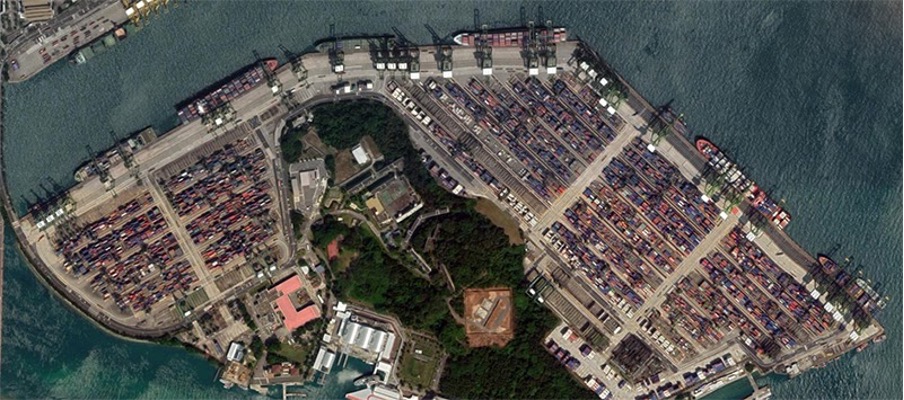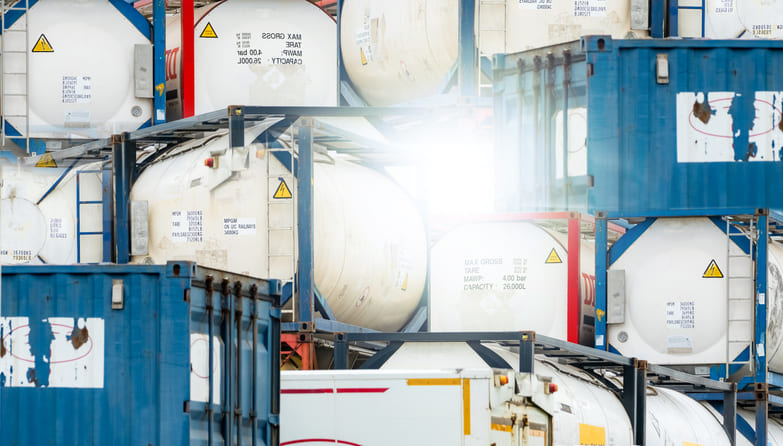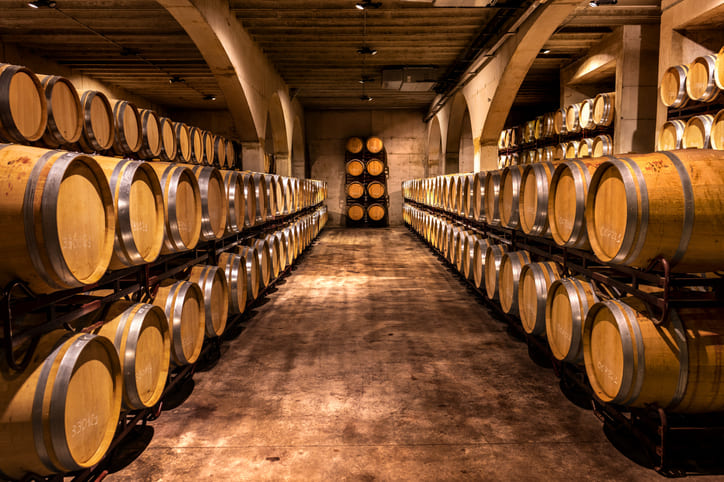Shipping terminology: 4 locations you need to know
The global shipping industry is a vast, interconnected and complex entity. It’s made up of many structures, locations, processes, and networks.
To keep everyone on the same page, each of these is named according to internationally agreed-upon shipping terminology.
Nevertheless, that terminology gets confusing. There’s just so many words to understand!
A question we often get is, what exactly is the difference between a harbour, port, shipping terminal and quay?
Don’t worry, it’s not a silly question!
Read on and learn the basics about these four shipping locations.
Shipping terminology
Harbour
Let’s break it down by size, as each is found within the others.
A harbour is in essence any sheltered area that ships can seek safe anchorage. When we think of a natural harbour, we typically envisage a bay surrounded by land or rocks.
However, natural harbours can also be in coves, by lakes, lagoons, estuaries and inside fjords. Many natural harbours have been taken advantage of and improved upon to enable commercial activities.
Completely man-made harbours, also known as artificial harbours, are constructed anywhere on an area of coastline.
They’re engineered with protective barriers like:
- Breakwaters
- Giant sea walls
- Tetrapods
- Large rocks
A common trait shared among all harbours, natural or man-made, is that they offer protection from the elements, like tidal range and storms. When we talk about a harbour in the shipping industry, we usually mean a harbour where wine and/or passengers can be transferred between ship and land.
Such a commercial or trade harbour is more commonly referred to as a seaport or simply port.
Port
The next shipping terminology we’re going to cover is ‘port’. Essentially, a (sea)port is therefore a dedicated trade or ship handling area inside a harbour.
This means there is always (un)loading of cargo and/or passengers or service handling in any port.
In short: a port is the area that’s used for commercial activity in a harbour.
All ports have land transport connections (either road and/or rail) to enable import and export of wine. Although a port is by definition situated in a harbour, sometimes the entire harbour is referred to as the port.
Some ports are so important that a whole surrounding town will be named after it (e.g. Port Hedland, the massive Iron Ore port in Australia). Every port is controlled, operated and run by a Port Authority.
Port Authorities are responsible for setting the commercial tariffs for the handling of ships, wine and passengers at that port. Ports can handle multiple types of cargoes, or be heavily specialised.
An example of a specialised cargo port is Ras Tanura, the enormous Crude Oil port in Saudi Arabia. If a port is set up to accept different types of products, then there will be distinct areas within the port for handling each cargo type. These specialised areas are called terminals.
Terminal
So, in shipping lingo, terminals are the separate areas of a port handling different types of cargoes.
Common terminals found in a single port may include a:
- Roll-on/roll-off (RoRo) car
- Oil and gas
- Bulk cargo
- Multipurpose
- Container
The shipping terminology, ‘terminal’, is also frequently used to name inland locations to where products are transported from the seaport via rail or road. This is also the case for the term Port. A ‘Dry Port’ is an inland intermodal terminal directly connected by road or rail to a seaport.
This is because it’s still under the control of the main port authority / ports and terminal operator. Each terminal in a port has one or several quays.
Quay
The final shipping terminology we’ll cover is ‘quay’.
Quays are the ship handling areas beside the ship berths within each terminal, complete with shore equipment to handle:
- Cargo
- Sheds
- Cargo storage areas
- Cargo discharge areas
A quay basically refers to the land area surrounding a ship berth. It’s a structure on the shore of a harbour or on the bank of a river or canal where ships may dock to load and unload cargo or passengers.
Think of a berth as a ship’s ‘resting spot’ in the harbour.
It’s the place where the ship is moored onto a platform, jetty, pier, landing, or dock (all of this shipping terminology mean the same thing and are used interchangeably depending on where you’re from!).
Note, a dock is typically used to refer to the specific area where ships are repaired, and may have gates to let water in or out.
One terminal can have several berths so multiple ships can be handled simultaneously, with one or several quays.

As an example: Brani Container Terminal in Singapore where you can see 6 container ships under operation. Each ship is moored at a different berth and the area immediately behind the cranes on the land side may be termed as quay.
Shipping terminology questions? Hillebrand Gori has answers
Shipping terms can seem confusing, but they’re important to know if you're in logistics or the trading of wine.
If you ever want to ask us a question or seek clarity over a shipping term that seems confusing, just gives us a call!
Published 21st March 2023, updated 26th February 2024
Shipping terminology helps maintain a standardized communication system, ensuring clarity and understanding among stakeholders. This helps avoid confusion or miscommunication, reducing the risk of errors and delays.
Ports and shipping terminals help facilitate international trade by serving as gateways for the movement of goods across countries. They provide infrastructure, facilities and services for loading, unloading, storing or distributing cargo. Efficient port operations are essential for smooth supply chains and global commerce.
Some famous or historic ports include the Port of Shanghai in China, the Port of Rotterdam in the Netherlands, the Port of Singapore in Southeast Asia and the Port of Los Angeles in the United States. These ports have played significant roles in trade throughout history and remain major hubs for international trade today.
Multipurpose terminals handle a diverse range of cargo. They’re adaptable and versatile, making them a popular choice for ports looking to handle a variety of goods.
How can we help your business grow?
-ebook-1---global-freight-forwarding/hil---cta-text-1---ebook-global-freight-forwarding-(1).png?sfvrsn=a2292c3e_3)
-ebook-1---global-freight-forwarding/hil---cta-post---blue.jpg?sfvrsn=f6dabc2a_2)



